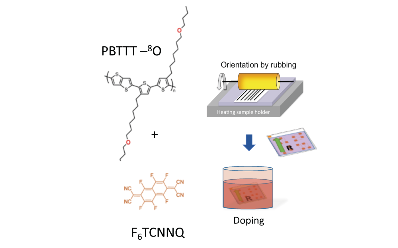Institut Charles Sadron News

Publié le 07/02/2022 par Brinkmann Martin
Exactly two centuries ago, in 1821, the Physicist Thomas Johann Seebeck discovered that a voltage appears at the junction between two materials subjected to a temperature gradient. The ratio between voltage and temperature gradients is the Seebeck coefficient S. Both S and the electrical conductivity must be as high as possible whereas the thermal conductivity must be low for efficient TE materials. The Seebeck effect can thus be used in thermoelectric materials to transform waste heat into electricity to power small electronic devices and sensors. To be effective, TE materials must have a low thermal conductivity, to ensure a high thermal gradient, a strong electrical conductivity to transport electricity. The Seebeck coefficient must also be high. So far, TE materials are essentially inorganic semi-conductors. However, in the last decade, more and more researchers focused on organic TE materials. Plastic TE materials are particularly appealing as they show a high mechanical flexibility, are light weight and can operate at temperatures close to ambient. Conversely, their conductivity is often poor and can be tuned by doping them with other molecules.
A collaboration of the organic electronic consortium of Strasbourg , composed of the ICPEES, ICS, IPCMS and the University of Saarland (Germany) managed to beat a new record in TE performances of polymeric materials. With a power factor close to 3 mW/mK2, the new record is about twice the previous value achieved 3 years ago by the Strasbourg group and 15-times beyond most effective organic systems. To reach this record performance, the ICPEES team has developed a new conjugated polymer with lateral alkyl side chains bearing a single ether function: these side groups help reach optimal ordering in the solid state, while improving miscibility with the dopant molecules. Thus, the dopant can generate very effectively charge carriers. A second trick used by the ICS team was to align this polymer by rubbing the film with a microfiber cloth. Alignment results in a substantial increase of carrier’s mobility in the chain direction, leading to very high charge conductivities. Beyond TE applications, the new family of polymers synthesized by ICPEES is potentially of use for electrochemical transistors that are of pivotal importance in bioelectronics.